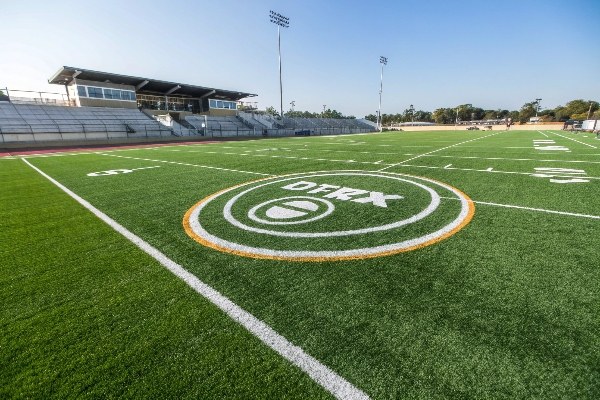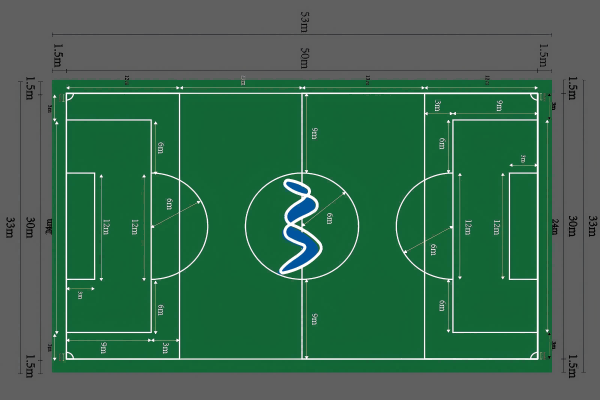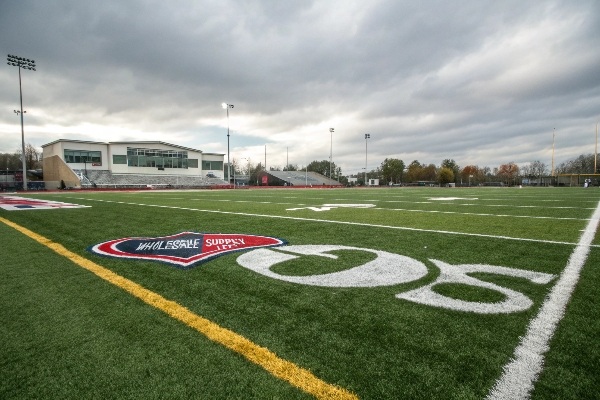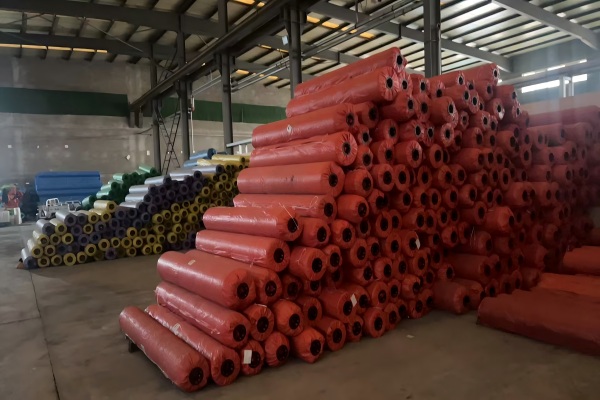You want to brand your new field, but you’re not sure if it’s possible. This uncertainty can delay your project and make you miss out on a professional look.
Yes, you can absolutely add a custom logo or design to most types of sports and landscape turf. The best method, either color tufting or waterjet cutting, depends on your design’s complexity, the turf specifications, and your project’s scale. Both can deliver a professional, durable result.

Getting a custom logo is a great way to make a project stand out. I’ve helped many clients create unique, branded surfaces for everything from professional sports stadiums to company courtyards. But the simple answer "yes" is just the start. The real success of your project depends on understanding the technical details behind the process. Let’s look at the critical factors you need to consider to make sure your custom turf design is not only beautiful but also built to last.
What Are the Technical Requirements for Turf Logo Integration?
You have a perfect design, but you are worried it won’t translate well onto turf. A poor execution can ruin your logo’s appearance and even weaken the playing surface.
The main technical requirements are a vector file1 of your design (like .AI or .EPS) and selecting a turf with a suitable pile height. The integration method, either waterjet cutting or direct color tufting, is then chosen based on the design’s complexity and your specific turf.

Over my years as an engineer, I learned that a successful logo integration starts long before the turf is cut. It begins with the design file and a clear understanding of the two primary manufacturing methods. Getting these right is the first step toward a perfect result.
Waterjet Cutting
This is the most common method for larger, simpler logos, like the center circle on a football pitch. Think of it like creating a giant, precise puzzle. We take rolls of different colored turf and use a high-pressure waterjet machine to cut out the exact shapes of your logo. Then, on-site or in the factory, we cut the corresponding shape out of the main green field and inlay the logo pieces. The pieces are joined from behind using special seaming tape2 and a strong, two-part polyurethane adhesive. The precision of the waterjet ensures the seams are tight and almost invisible. This method is versatile because we can use standard color turf rolls that we already have in stock.
Color Tufting
This method is for more intricate or complex designs. Instead of cutting and pasting, we program the tufting machine to stitch the logo directly into the turf’s primary backing using different colored yarns. This creates a seamless logo that is part of the turf itself, with no cuts or glue involved. Because the logo is fully integrated, it offers the best possible durability. However, this process requires significant production setup. We have to load the machine with specific colored yarns for your design. This makes it a factory-only process and is usually reserved for larger orders where the setup costs can be justified.
How to Ensure Your Custom Design Lasts on High-Traffic Turf?
You’ve invested in a beautiful custom logo. Now you’re concerned that heavy use will cause it to wear out, fade, or peel away from the main field.
To guarantee durability, insist on using high-quality, UV-stabilized yarns that match the field’s specifications. For cut-in logos, professional-grade seaming tape and two-component polyurethane adhesive3 are essential. Strong backing and stitch lock prevent tufted logos from losing fibers.

I always tell my customers that the logo should be just as tough as the rest of the field. A weak point in the logo becomes a weak point for the entire surface, which is a safety and performance issue. Durability comes down to two things: the quality of the materials and the strength of the construction.
Yarn and Backing Quality
The logo’s turf fibers must be made from the same high-quality, durable material as the surrounding field turf. This means they need a high Dtex (yarn weight) and strong UV stabilization to prevent fading and premature wear. I’ve seen projects fail where a cheaper turf was used for the logo to save money. The logo area wore down faster, creating an uneven and unsafe surface. Similarly, for tufted logos, the latex or PU coating on the backing must be applied correctly to lock in every single fiber, ensuring nothing can be pulled out during intense play.
The Importance of Seams and Glue
For waterjet-cut logos, the seams are the most critical points. If they fail, the logo will start to lift. This is a major hazard. The key is in the adhesive. I only recommend using a two-component polyurethane glue. It creates a powerful, weather-resistant bond that is much stronger than typical single-component adhesives. This glue is applied to a high-quality seaming tape, which is a durable non-woven fabric that joins the pieces from behind. The installer must be skilled, ensuring the surfaces are clean and dry to create a bond that will last for the life of the field.
What Is the MOQ for Custom Colors and Logos?
You have a vision for a custom-branded space. However, you’re worried that the minimum order quantity (MOQ) will be too high, especially for a smaller project or a unique color.
The MOQ depends on the method. For custom-tufted logos or special yarn colors, the MOQ is high, often 1000-2000 square meters. For logos made with waterjet cutting using standard colors, the MOQ is very low and much more flexible.

Understanding the MOQ is crucial for budgeting and planning. When I first started in sales, this was one of the most common questions from clients. The reason for the big difference in MOQ is all about the production process and material sourcing.
Why is the Tufting MOQ so High?
Creating a custom color that is not in our standard stock requires a special production run from our yarn supplier. They have their own minimums, often 500 kg of yarn per color. Then, we have to stop our large tufting machine, remove all the spools of green yarn, and set it up with your custom colors. This process of changing the machine setup and managing special materials is time-consuming and inefficient for small quantities. To make it economically viable for both us and the client, we need a larger order, typically 1000 sqm or more. This is also true for complex, multi-color logos that are tufted directly.
Flexible Options with Waterjet Cutting
Waterjet cutting offers a fantastic solution for smaller projects. Since we often stock rolls of standard turf colors like white, yellow, red, and blue, we can create your logo without needing a new production run. We simply take these stock rolls to the waterjet machine and cut out your design. In this case, your "MOQ" is simply the amount of material needed for the logo itself, plus a service fee for the cutting. This makes it possible to add a professional logo to a single tennis court, a playground, or a small landscaping project without a huge financial commitment.
Conclusion
Adding a logo to your turf is definitely possible. Focus on the right technique, demand quality materials and installation, and understand the MOQ to get a fantastic, long-lasting result.
_画板-1.png)
_画板-1.png)